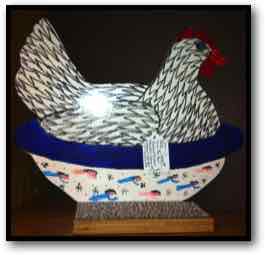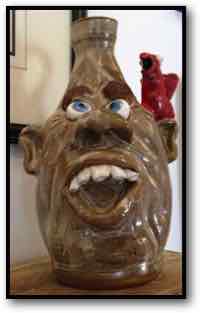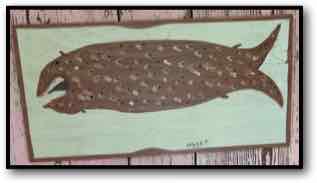“Art is what you can get away with” -- Andy Warhol

Folk and outsider art are many things to many people. It takes many shapes, forms and media.
Many things are practical -- face jugs, face pitchers, jugs, mugs, furniture -- some is for fun -- jewelry -- and some is just for expression.
Art can expresses happiness, sadness, faith, patriotism, love and hate.

Folk art traditionally encompasses art produced from an indigenous culture or laboring tradespeople. There are great examples of this in the Abby Aldrich Rockefeller Folk Art Museum.
Folk art is primarily utilitarian and decorative rather than purely aesthetic. It is typically, although not always, characterized by a “naive style.” Unlike fine art, folk art was more of an influence to movements in academia than influenced by it. Folk art style is sometimes similar to modern masters in twisting perspective and distorting subjects and reality. Face jugs are great examples of this.
Folk artists in the 18th-, 19th-, and 20th century, especially painters and craftsmen, made their living by their work. Itinerant portrait painters brought many images into homes and some some produced large bodies of work. Many vintage and contemporary artists left (or are leaving) considerable bodies of work.

Outsider art as a term is often used interchangeably with the term “folk art.” There is a difference, however. The main difference, however, is that a folk artist had some form of training (even if it was informal) while outsider artists are self-taught. Folk artists traditionally learn skills and techniques through apprenticeships in informal community settings, though they may also be formally educated.